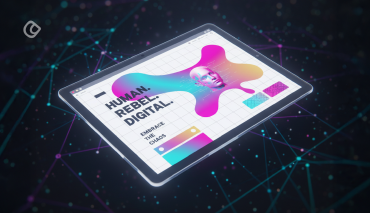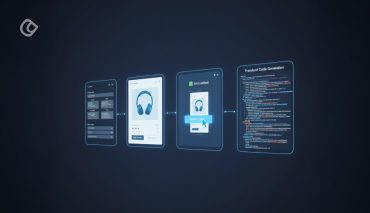Designing an app is not a difficult task. This reminds me of a newspaper cutting that I found with my little brother, in praise of a 7 year- old who was developing apps for the Apple Company. She was doing this to help her little sister sort out things and make life easier for her.
Forgot to tell you my little brother is another techie and I can always find him hunting for hacks to make life and things easy. A few months back he told me he was developing an app that will help him to memorize his multiplication tables in Math.
These kids are really awesome! But, let me come back to our point of discussion. It looks like developing apps are quite simple and easy. Even kids are doing that.
When a professional app designer is working on creating intricate apps to bring about a great user experience, is should help novice users to realize what they are working on while ensuring that it does not bore the experienced users.
There are experts who have been trying to bridge the gap between user experience and the state-of-the-art technology apps that are all set to create history.
Experts have been experimenting on various tactics to find out what actually works for their people. The problem arises when all you want is to develop an app that is superb but it should fit well into the little room that you have over the mobile devices.
I have often wondered when I see the design team at Acodez strive hard to develop apps that are awesome but fit well into the screen space of every device that the client demands.
It is worth mentioning that the team of app developers that we have at Acodez are outstanding professionals because the apps that they develop will suffice any kind of end users.
I have been working closely with my colleagues to find out the secret behind how they develop apps that people love and with a little research I have put together some points to help you out.
Follow these tips and I am sure you will emerge an expert at mobile app UI design.
Let’s get started:
1. Users are your ultimate goal:
Users, users and users! They are the only factor that matters to you. The most important point that you need to focus on when you are designing a mobile app is the users.
Know your users. This is the first step to designing an excellent app UI for a variety of devices.
Here, I will take you across the basics of user psychology that will help you design as per your user’s hopes and desires:
1. Let’s start with personas:
Who do you think personas are? I don’t know if you have ever gone through the pages of Hubspot or any of their tutorials, then you would be quite familiar with the word “personas”, as they use it throughout.
You know the audience you are targeting. So, you need an app that fits in their requirements.
Talking about personas, these are the fictional characters that are designed on the basis of the characteristics of the end users.
The point behind thinking about personas while you work on your design is that it will help you determine their decision making factor.
2. Creating user scenarios:
It allows you to determine how your user is going to act while operating the app. Once you have an user scenario you can understand how these people are going to behave and then develop an app that best fits into their needs and helps them achieve their goals.
3. Maps:
It is one of the best ways to determine user interaction with your app. When you realize how they are bound to react at each stage of your app’s operation, you can move your design accordingly.
The necessity is to learn and find out the user emotions at each stage of the app.
One of the best ways you can approach is that you can perform usability tests at each phase of your app development cycle.
But, the usability tests needs to be bombarded before you move on with each stage. Examine how they interact with the apps and then proceed.
2. Familiarity:
When you are addicted to an app, what do you expect from the app makers?
They expect the familiar pattern from you again.
How does the mobile design work?
Orientation, thumb placement and posture are the common mobile design nuances that drive users.
What are the common interfaces that you can find?
It could be anything ranging from slide-out to navigation.
When users encounter with a familiar pattern they feel very much emotionally attached to the app.
This does not mean that you need to stuff in similar patterns that others are using or something that you have already used to design your previous apps.
You can imbibe in similar patterns as the baseline and moving further you can weave in your creativity which will be the highlight of the app. This means that there is no scaring the users.
They get to know what you are providing them.
Let me take you across the two most important categories of mobile app designs that any designer needs to start include in their designs:
- Gestures: As mentioned in the next web, it is important to take into account gestures which drive mobile-apps. These gestures includes zoom, pinch, swipe, and double-tap are the familiar gestures that every user knows when they come across an app.
- Animations could work wonders: Motions is one of the factors that keep users attached to the apps.
Gestures disappear and animations flow out. There exists a distinction between one that disappears and the one that flows in and out of sight.
Your smartness lies in bridging the gap between both.
3. Accessibility is the key to your customer’s heart:
Finger-friendly designs are one of the key to your customer’s heart. While designing one should always remember that the pixel-precise mouse cursors are never a replacement for the size of human fingers.
There needs to be enough room for users to tap and move with ease.
Keep those buttons apart such that they can tap and move across easily.
So, how do you design those buttons such that they are not too crowded and are at an optimal distance from one another?
These are the important elements that you need to take into consideration:
- User’s behavior when they hold a phone:
How do you think users will hold a phone?
There could be possibly three ways a user will hold a phone:
Some people might hold it with one thumb/ one hand while others may use two thumbs/ two hands. When it comes to devices such as tablets, some people might use just one hand but there are those that might use both their hands.
Not all are slim and not all are fat. So, design with both these kind of fingers in mind.
The general rule is to keep it 45 pixels wide though it could be too big in some cases.
No matter what always take into consideration the people’s fingers before you move ahead with the design.
4. Interactive design is the need of the hour:
Regardless of the screen space your app will enjoy, you need to plan the interaction design.
Here, are the aspects of interaction design:
- Designs that are goal-oriented:
Find the right user. As we have already discussed all the designs should be tested on user personas. You can get it done by designing these for your targeted personas.
You can focus on what goals your users want to accomplish.
You can conduct research and surveys that will help you design apps that are user specific.
- Ease of use:
This is one of the most important points that you need to consider while designing apps.
Unless your app does not fit into their needs, what use it?
People will not download your app if they find it to be useless.
You want maximum number of people to download your app from the App Store, so ensure that it is easy for them to use.
What does each function indicate? The point behind using signifiers is that it will help the users to identify what they have to do next.
We have already discussed familiarity in mobile app patterns. It is one of the most important things that drive users to download an app. They should feel that it will be easy for them to use the same.
5. User Experience begins with Content Mapping:
It is one of the easiest things that will guide you through your app designing is content mapping.
Remember your design is for apps that will be accessed via mobile devices.
The space is too less. You need to convey the message within no time and no space.
Get your content curated first and then, design the app.
It will fit in with ease, no doubt.
6. Flat design credits:
Flat design is the new cool.
So, what is the inset and outset elements that you need to consider when you design your apps?
Inset Elements include:
- Checkboxes
- Slider tracks
- Input fields
- Pressed buttons
- Unselected radio buttons
Outset Elements include:
- Dropdown controls
- Popups
- Unpressed buttons
- Selected radio buttons
- Slider buttons
These are some of the simple tips that will help you design some of the best apps in the world.
I believe my designer friends have found success with these tips. So, why don’t you try it out today?
What are the UI design hacks that you use for designing apps? Is it a trendsetter or fails to impress the consumers?
How do you view it? Share your thoughts, comments and feedback with us.
Acodez IT Solutions is a web design company in India. We cater to our clients all over the world with a wide variety of web design and development services. And, the amazing part is that we use only the latest trends and innovative techniques to build apps. We are also a SEO agency in India offering a variety of inbound marketing services.
For more details, contact us today.
Looking for a good team
for your next project?
Contact us and we'll give you a preliminary free consultation
on the web & mobile strategy that'd suit your needs best.





